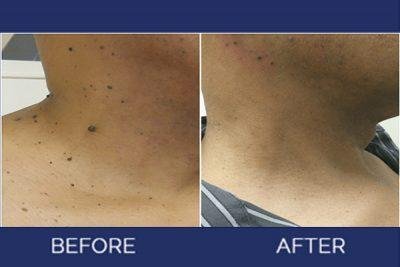Skin Tags


Skin Tags
Skin tags are benign, noncancerous, tumors of the skin. They consist of a core of fibers and ducts, nerve cells, fat cells, and a covering or epidermis.
They may appear on the:
- eyelids
- armpits
- under the breasts
- groin
- upper chest
- neck, in the case of papilloma colli
They often go unnoticed, unless they are in a prominent place or are repeatedly rubbed or scratched, for example, by clothing, jewelry, or when shaving.
Some people may have skin tags and never notice them. In some cases, they rub off or fall off painlessly. Very large skin tags may burst under pressure.
The surface of skin tags may be smooth or irregular in appearance. They are often raised from the surface of the skin on fleshy peduncles, or stalks. They are usually flesh-colored or slightly brownish.
Skin tags start small, flattened like a pinhead bump. Some stay small, and some grow bigger. They can range in diameter from 2 millimeters (mm) to 1 centimeter (cm), and some may reach 5cm.
It is not clear exactly what causes skin tags, but it may happen when clusters of collagen and blood vessels become trapped inside thicker pieces of skin.
As they are more common in skin creases or folds, they may be mainly caused by skin rubbing against skin.
Some people appear to inherit an increased susceptibility to skin tags.
Skin tags affect people both males and females, but they happen more often during pregnancy, in people who are obese, and in people with diabetes.
They have been associated with hyperinsulinemia, when there is too much insulin circulating in the blood.
Info from https://www.medicalnewstoday.com/articles/67317#causes
Book An Appointment
Client Question
Frequently Asked Questions
The procedure is safe and precisely controlled with no discomfort
Depending on the regions you treat, your treatment might take anywhere between 30 and 60 minutes.
There is no downtime following your treatment, however you can have flushed, pink skin for up to an hour.
Following the technique, you’ll observe changes gradually over several weeks.
